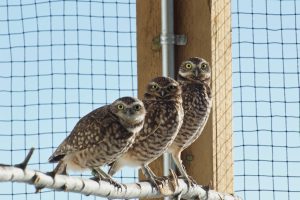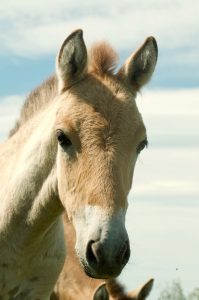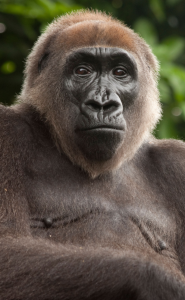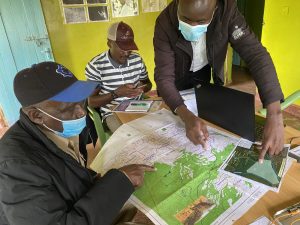Giving species-at-risk a fighting chance at survival
January 26, 2023
It’s a worrying time for biodiversity, which means it’s even more important to celebrate the big and small wins in conservation. Scientists and animal care experts are showing to us that with patience, dedication, and hope, it is possible to create an optimistic future for biodiversity. From new births and releases to community-based conservation, here is a roundup from 2022 of some the ways that we’ve been giving biodiversity a fighting chance.
Lending a helping hand to wild populations
Due to their status, species-at-risk generally face the threat of small populations and consequential impacts. Conservation translocations, a tool that intentionally moves a plant or animal from one location to another for a conservation benefit, has been widely used around the world to bolster populations in the wild. Last year, we worked with partners to support the translocation of over 4000 indviduals.
- 20 burrowing owls were released as part of the head-starting program in collaboration with Alberta Environment and Protected Areas and Canada Wildlife Service.
- 1,929 northern leopard frog tadpoles were released into B.C. waters as part of the B.C. Northern Leopard Frog Recovery Team. These tadpoles were head-started by collaborator institutions and translocated from wild populations.
- 10 Vancouver Island marmots that were born at the Wilder Institute were released by the Marmot Recovery Foundation.
- 2 whooping cranes were transferred to the International Crane Foundation for release.
- 41 sage grouse were released into Alberta and Saskatchewan’s prairie habitats, a program supported by the ongoing funding from Alberta Environment and Protected Areas and Environment and Climate Change Canada.
- Wilder Insititute supported the planting of 1,000+ wood poppies and 1,000+ crooked-stem asters through the collaborative efforts by the University of Lethbridge, University of Guelph, and Kayanese.

“The movement of more than 4,000 plant and animal individuals into the wild is an accomplishment that all Canadians should be celebrating,” said Dr. Clément Lanthier, President and CEO, Wilder Institute/Calgary Zoo. “It really goes to show how conservation truly is a collaborative effort and isn’t possible without organizations, communities, government, and individuals coming to work together for the betterment of biodiversity, no matter how big or small the role is that they have played.”
Animal care experts bring in new life

In the case that no suitable wild populations exist as a source population for a potential translocation, those species may benefit from a conservation breeding program that aims to produce new individuals for translocation. For us, this includes the Critically Endangered Vancouver Island marmot, which is only found on Canada’s Vancouver Island. Last year, we celebrated the birth of 17 marmot pups which were later transferred to the Marmot Recovery Foundation for release.
Some species may be supported in other ways outside of conservation breeding. For example, the youngest burrowing owl chicks in a clutch face very low chances of survival so the Wilder Institute/Calgary Zoo brings these owlets under the care of humans to give them a head start. Last year, their team celebrated the fledging of 24 chicks by head-started owls.
Both the Vancouver Island marmots and burrowing owls have been residing at the Wilder Institute/Calgary Zoo’s new conservation facility, the Archibald Biodiversity Centre (ABC), which just opened in the summer of last year. The ABC will allow the organization to expand their breeding and conservation efforts and provide exceptional care for the species-at-risk at the facility.
Conservation breeding may also contribute to goals outside of translocation. Two Critically Endangered Przewalski’s horse foals were born at the Wilder Institute/Calgary Zoo, thanks to efforts by their Animal Care, Health & Welfare team, which will remain at the facility to preserve the genetics of this species, as per a global Species Survival Plan.
When species survive, communities thrive

When thinking about wildlife conservation, it may be easy to place biodiversity as the sole focus. But conservation is not only an important tool to drive change for species-at-risk, it’s essential for driving development, equality, and well-being for people. Effective conservation can deliver benefits to both human life and wildlife, which is what the practice of community conservation seeks to amplify.
We expanded our community conservation portfolio to add the collaborative Cross River Gorilla Initiative, working together with the Nigerian Conservation Foundation and the Centre for Biodiversity Conservation Research. This new program aims to learn more about the Critically Endangered Cross River gorilla, of which approximately 300 individuals remain in the wild, while also empowering future conservation leaders in Nigeria.
We also celebrated the opening of the Eburu Natural Forest Honey Cooperative Office in Kenya through the Kenya Mountain Bongo Partnership, an initiative that we have been a part of since 2014. This new space will expand the local community’s goal of generating sustainable income through honey harvesting and product development while easing human pressure on forest resources and the Critically Endangered mountain bongo which calls those forests home.
Science-informed conservation is key
Wildlife conservation is a slow and complex process. It often requires months or years of research before implementing any steps in the real world. That’s why we prioritize research and ensure that all our conservation translocation and community conservation initiatives are backed by sound science.
Last year, our researchers learned about some of the complex interactions between communities around Eburu National Forest in Kenya, and the natural resources and wildlife that surround them. The study found that while there was immense support for a potential mountain bongo reintroduction with 94.5% of survey respondents supportive of the initiative, illegal hunting and logging are still factors that could threaten a potential reintroduction. With these results at hand, we’re encouraging further support of sustainable business development, such as the Eburu Natural Forest Honey Cooperative, to support sustainable livelihoods.
We also welcomed more than 1,000 responses from 109 nations in a survey to forecast the future of community conservation. The Community Conservation horizon scan invited experts from the discipline to identify the gaps and opportunities in this expanding, and extremely important applied practice of conservation.
Connecting people and wildlife
Conservation is most effective when people come together to take action, and education is key for driving this action. Last year, we shared our knowledge in conservation and how to protect species-at-risk with over 6,000 people through our first-ever Alberta Biodiversity Festival. Through the Conservation Champions program for youth, we also empowered 372 future conservation heroes in Canada, who helped to advocate even further for species-at-risk with their peers and communities.
Creating a wilder future together
We’re even more excited for what’s coming next year! We hope to expand our conservation impact and deepen our connections with the communities that are stewards for these species-at-risk.
“It’s inspiring to see what our team has accomplished for biodiversity and for communities over this last year,” said Dr. Clément Lanthier. “While challenges may persist, hope does exist for biodiversity. The resiliency of species, as well as the determination of people around the world to protect them, paints me an optimistic future for both wildlife and wild places. We can’t wait to see what wins come out of 2023.”
We partner with over 60 collaborators on 17 programs in Canada, and globally. To see our full list of collaborators, click here.
What else is happening in the world of wildlife conservation?
